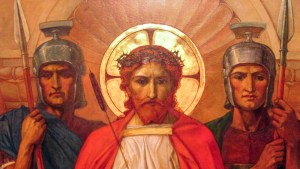During the heart of Lent, the Church celebrates a feast honoring the incarnation of Jesus Christ in the womb of the Virgin Mary. It is an interesting feast, as it interrupts the fasting and penance of Lent to celebrate Jesus’ coming into the world.
The Gospels do not mention the date of Jesus’ incarnation, nor his birth. As a result, early Christians had to fix specific days on the calendar for these celebrations, taking into account both oral and written traditions.
After careful considerations and much debate, the early Church eventually fixed the feast of the Annunciation on March 25, and this date was chosen based on Jesus’ death.

Read more:
Is March 25 the historical date of the crucifixion?
The date of March 25 for the Annunciation can be traced back to either the 3rd or 4th century and was fixed to coincide with the day Jesus died. The Catholic Encyclopedia explains the reasoning behind this calculation.
All Christian antiquity (against all astronomical possibility) recognized the 25th of March as the actual day of Our Lord’s death. The opinion that the Incarnation also took place on that date is found in the pseudo-Cyprianic work “De Pascha Computus”, c. 240. It argues that the coming of Our Lord and His death must have coincided with the creation and fall of Adam. And since the world was created in spring, the Saviour was also conceived and died shortly after the equinox of spring…the ancient martyrologies assign to the 25th of March the creation of Adam and the crucifixion of Our Lord; also, the fall of Lucifer, the passing of Israel through the Red Sea and the immolation of Isaac.
It was believed by some ancient Christians that a person died on the same day they were conceived.
St. Augustine in the 5th century wrote about these dates in his book On the Trinity, “For He is believed to have been conceived on the 25th of March, upon which day also He suffered; so the womb of the Virgin, in which He was conceived, where no one of mortals was begotten, corresponds to the new grave in which He was buried, wherein was never man laid, neither before nor since. But He was born, according to tradition, upon December the 25th.”
It appears that the date of Christmas in the Roman Church was determined after establishing the date of Jesus’ incarnation. As a result, Christmas was celebrated 9 months after March 25, taking into account the approximate time a child develops in his mother’s womb.
March 25 was day full of symbolism for early Christians and remains an important day for Christians around the world.

Read more:
What does the word “Annunciation” mean?

Read more:
Annunciation: The entire and perfect reversal of our fallen fortunes

